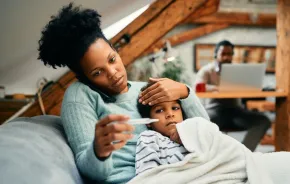When Bradi Nathan took her kids, ages 7 and 10, to see Valentine’s Day recently, she asked the ticket seller if the PG-13 movie was appropriate for kids. He said, “Yes.”
“From the previews on television, the movie looked to be sweet enough, but that was wrong,” says Nathan. “The entire movie revolved around love and sex. I really wish I had checked further before taking my kids.”
The current movie rating system was established by the Motion Picture Association of America (MPAA) in the 1960s, when movies started exploring more mature topics, like sex and drugs, says Jane Boursaw, an editor and staff writer for Moviefone.com. These ratings are determined by a rating board located in Los Angeles.
In 1968, there were four rating categories:
- G – General audiences, all ages admitted
- M – Mature audiences, parental guidance suggested, but all ages admitted
- R – Restricted, children under 16 not admitted without a parent or guardian
- X – Nobody under 17 admitted
“As you might imagine, a few things were missing — like a PG rating,” says Boursaw, who also owns two movie-related Web sites, FilmGecko.net and ReelLifeWithJane.com.
This is the rating system today:
- G – General audiences, all ages admitted
- PG – Parental guidance suggested, some material may not be suitable for children
- PG-13 – Parents strongly cautioned, some material may be inappropriate for children under 13
- R – Restricted, under 17 requires an accompanying parent or adult guardian
- NC-17 – Nobody 17 or under is admitted
Another rating has recently popped up on the previews, or trailers, shown before the feature presentation: “Appropriate for approved audiences.” This means the trailers are OK for whatever age group is seeing the movie, explains Boursaw. So, if a trailer for a PG movie is played before a G movie, there shouldn’t be anything in the trailer that a “G” audience couldn’t see.
‘A starting point’
“The system is imperfect,” says Christian Toto, who contributes to Boxoffice.com and blogs at WhatWouldTotoWatch.com. “Some films, like the recent comedy Year One, hardly seemed like a PG-13 presentation, and sites like Fandango.com reported parents complaining about its inappropriate content on their message boards. The ratings today are a starting point, nothing more.”
Toto believes that the PG-13 is the most problematic rating, because its boundaries are so fuzzy.
Boursaw says the system is fairly good, but there’s always some wiggle room one way or the other. Boursaw recently reviewed the movie Percy Jackson & the Olympians: The Lightning Thief, which is rated “PG for action violence and peril, some scary images and suggestive material, and mild language.” Boursaw believes the movie is actually more like a PG-13 movie, and recommends the film for kids 12 and older.
Another PG movie Boursaw thought edged into the PG-13 arena was Marley and Me, because of its mature subject matter: the death of a beloved pet. But there’s a lot at stake in the ratings game for moviemakers.
“Filmmakers know that by moving a rating up to a PG-13, they’ll lose a significant number of younger viewers who have been looking forward to seeing a movie about a family and their pet,” says Boursaw, who also writes and edits for TVSquad.com and AOL TV.
And Boursaw says two movies with the same rating can be radically different, which is confusing for parents who are trying to decide if a movie is OK for their children. She cites Nine and Harry Potter and the Order of the Phoenix, which are both rated PG-13 but are radically different types of movies.
What to do?
Toto would like to see the current movie rating system develop more consistency and provide more information — specifically, why a particular movie deserves a particular rating. Unless and until that happens, he recommends parents check multiple online reviews before taking children to a movie.
Boursaw’s site ReelLifeWithJane.com maps out specific details regarding sexual content, language and violence, so parents can see exactly what a movie contains before taking the kids. Failing that, talk to friends who have already seen the movie. Ask about violence, language, romance and anything else that makes a movie a “no-go.”
Heather Larson is a Federal Way–based freelance writer.











